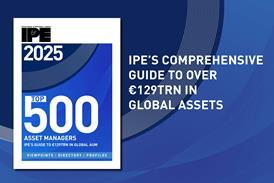Lesson 1: Do not believe the consensus and particularly the bullish propaganda.
It is a natural human tendency to believe that ‘they’ are right, that the experts know what they are doing. Remember that most of what you read and hear in a bull market is propaganda. Ask yourself about the probable motive of the speakers. Are they trying to sell stocks? It is many times easier selling stocks in bullish times with optimistic clients. Are they like Greenspan trying to keep congressmen happy? Witness how fast he backed off his beautifully timed advice on “irrational exuberance”. Recognise that the government has a vested interest in bull market revenues. Recognise that, especially in this cycle, corporate officers have a huge vested interest in talking their stocks up and exaggerating their earnings because of their excessive, sloppily issued stock options. Recognise that corporate accountants want to keep their jobs by providing the answers that CEO’s want. Most importantly, in recognising propaganda, recognise that the media’s job description is to attract viewers and sell copies. This means, in general, delivering what makes readers feel good. If raining on the parade reduces sales, why should they do it?
When all of these factors are in sync, they create an enormous brain-washing capability and your first job, we have all painfully relearned, is resisting this pressure. ‘They’ are usually wrong. You must dare to be independent. Contrarian impulses are usually better. They are always better in major bubbles and busts.
Lesson 2: The market is inefficient
The dominant academic group in stock market research has held, since about 1970, that the market is efficient. The efficient market hypothesis (EMH) assumes that investors are well and speedily informed about all knowable data, that they have the skills and wisdom to process the data accurately and the psychological makeup not to mess it all up. The reality, I believe, is that investors are fallible and emotional and have neither the mathematical nor the psychic means to process data accurately, nor in the case of professionals, whose main job is protecting their careers, the incentive. This mismatch of views and reality has been described by Larry Summers as “the most remarkable error in the history of economic theory”.
We have just had the type of bubble that should occur by chance in an efficient market every 60 years. It has been followed immediately by the type of downward move that should occur every 40 years. This immediate connection should occur regularly every 1 in 60x 1 in 40 years or every 2400 years! Yet every major bubble since before the South Sea Bubble in 1721 and including the 1929 Crash and Japan in 1990 has had exactly that configuration. One of the many inefficiencies in human behaviour that cause inefficient markets is wishful thinking and this, ironically, is shared by the academic establishment of 1975-1995. They wished investors to be rational. But their wishing has not worked. The market is enormously inefficient and getting more so.
Lesson 3: The market is driven by behaviouralism
Individual investors not only want to believe that ‘they’ are right, and that good news is better than bad. They are also good at suppressing dissonant information, so that bearish input easily bounces off those who have decided to be bulls. They also disproportionately prefer markets, situations, stocks and so on that make them feel comfortable. Worst of all, when dealing with the future, they adopt the convention (that Keynes pointed out in 1936) that the current situation will continue. In this way, they extrapolated the unprecedented fat profit margins, low inflation and low interest rates of March 2000 into the indefinite future, just as they had extrapolated the 13% inflation and low profit margins of 1982, when the 30 year US government bond yielded 15%!
Lesson 4: The real cruel world regresses to the mean and 2000 – 2003 is a great example
Unfortunately, the world record profit margins of 2000 had to regress back to average and below. That is, after all, how capitalism works. If exceptional profit margins do not attract assets and increased competition, until we drown in say fibre optic cable, then the capitalistic system is broken. So investor comfort and good times are coincident indicators and as inflation and rates rise and margins fall, so investors’ discomfort drives down p/e’s. Perversely, therefore, 1982 with terrible inflation, 15% government bonds, a recession, an oil crisis, and destroyed profit margins also has a low p/e. Similarly, March 2000 had perfect comfort factors and the highest p/e ever (33x stated or 40x normal margins). All of which was doomed to regress painfully. For the record, all 27 of the bubbles in all asset classes that we have identified in the last 100 years went all the way back to the preexisting trend. There were “no new eras”, despite Irving Fisher’s “new high plateau” belief in 1929; despite the belief in “Japan Inc.” in 1989; despite Greenspan’s belief that the internet and new technology had caused higher productivity that in general probably justified higher stock prices. ‘This time’ is never different.
The bubbles that reached their biggest in March 2000 have all regressed back towards normal once again. The growth stocks were at the highest premium ever to value stocks and are now back to normal. In the process, value stocks saved enormous pain. Large cap stocks had the second largest gap over small caps and are now back to normal. The S&P 500 covered 80% of the way back to normal. These bubbles all behaved perfectly as normal.
Lesson 5: Regression is near certain but the timing of regression to the mean is very uncertain – therefore playing it is dangerous to your career health.
Risk for investors is not primarily the volatility of the asset prices. Risk for practitioners is mainly career and business risk of being wrong in the short-term and for individual investors, risk is mainly the chance of losing money.
The value of all asset classes passes through the mean, but you cannot know when; the future is unknowable. This is like the bag of feathers thrown into the hurricane from a high building. Some will land a block away in a few minutes and some will blow from Jamaica to Maine in two weeks. You don’t know how high they will go or how long they will be up, but you know one thing with absolute certainty - they will all hit the ground. The feathers are a good analogy to the gravitational pull of value.
The timing uncertainty, though, creates enormous risk. No fund manager would build up a lot of cash even if he knew the probabilities were 70% in favour of cash and only 30% for equities. No professional would take a 30% chance of losing his career. If he did, he would have a 2.4 year life expectancy.
With more specialisations like small cap value and emerging countries, few managers can move across boundaries so that the arbitrage mechanism between categories is weakened and inefficiencies become larger, but also riskier to play. These great opportunities will therefore always exist and always be dangerous to careers.
Lesson 6: Great bear markets take their time and always overrun on the downside.
Great bubbles usually take about the same time or a bit less to get back to trend as they took to rise above it. This market should therefore have been expected to hit trend (680 ±10% on the S&P 500) by about the fall of this year. Typically, the overrun below trend will also take several years. Remember, all asset classes spend half their time below trend, much of it following the bursting of bubbles. Following the 1929 crash, it took over 20 years from the early 1931 trend line market to get back over trend and stay there for a few years. fter the 1965 peak, it took 13 years from when the trend was crossed in early 1974. Japan, following its bust in 1990, took seven years to reach trend again and is now five years below and counting and counting. This information was all available in March 2000, but by far the most common opinion, given by the industry, was that the bear market would be mild and quick and last no more than a year. Such a short decline after a major bubble would have been unique in history!
Jeremy Grantham is group chairman of GMO in Boston














No comments yet